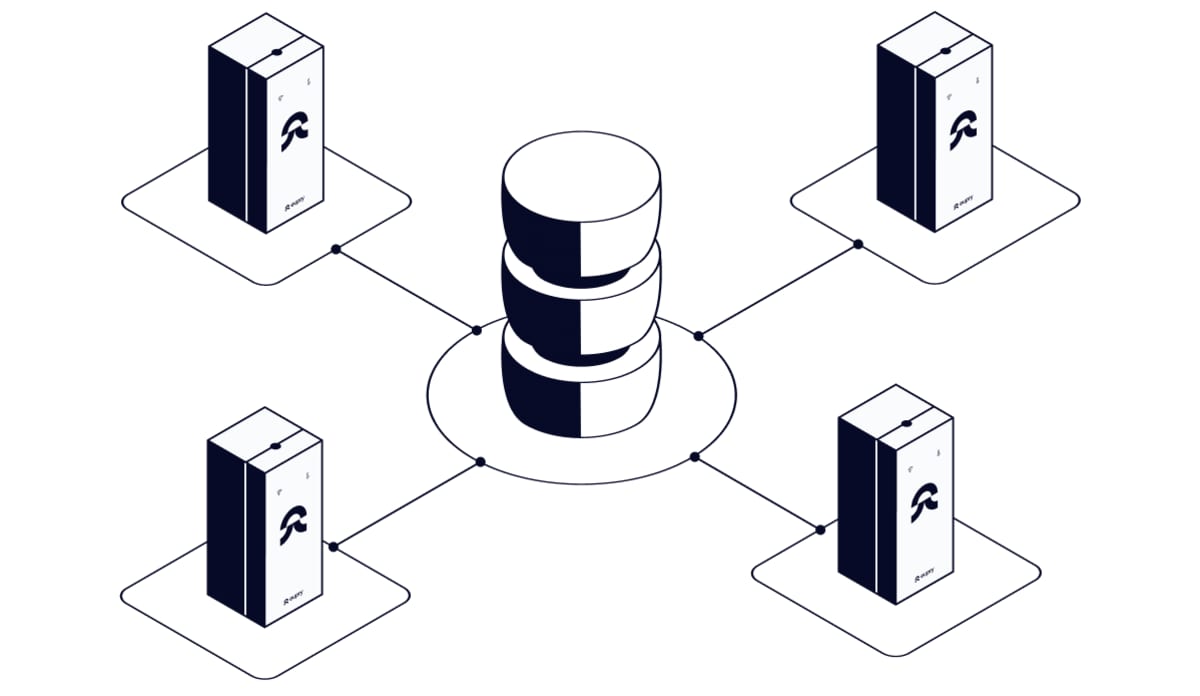The key components of GxP compliance
GxP is a pillar of temperature compliance for pharma, biotech, pharmaceutical logistics, and other life science industries. But what does GxP mean? What are the diffrent GxPs in pharma? And how do you make sure your processes follow the guidelines?
This guide takes you through the steps you need to secure GxP compliance.
Tip! Ensure GxP adherence with an automated temperature compliance solution built for pharma. See how it works here.

Note
While we aim to provide accurate and current information, this article should not replace staying up-to-date on updates and guidelines directly from regulatory bodies. If you need specific GxP temperature compliance advice, you can book a free consultancy with one of our specialists here.
On this page, you can learn about:
- What is GxP?
- Should you follow GxP guidelines – and if so, which?
- What is GxP in the pharma industry?
- The 6 fundamental requirements of GxP
- How to meet GxP guidelines in temperature compliance
- 10 critical components of GxP-compliant monitoring systems
- Eupry as your GxP compliance partner: How does it work?
- FAQ: Questions and answers about GxP


What does the “x” in GxP stand for?
From Good Laboratory Practice (GLP) and Good Manufacturing Practice (GMP) to Good Clinical Practice (GCP): The "x" in GxP acts as a placeholder for various sectors, indicating the guideline's specific applicability.
What is GxP?
GxP stands for "Good x Practice". The definition of the term GxP covers a collection of quality guidelines and regulations set by the FDA.
The purpose of GxP is to ensure that products are safe and meet their intended use by securing quality processes through all stages of the product's lifetime – manufacturing, storage, distribution, and more.
In other words, GxP combines a range of guidelines aimed at ensuring that regulated industries like pharma, biotech, and logistics meet quality standards.
Should you follow GxP guidelines – and if so, which?
Although the GxP guidelines are just that, guidelines, many regulatory bodies have incorporated the principles into their regulations. As such, following relevant GxP guidelines can serve as a step-by-step roadmap for achieving compliance.
In short: The type of products you work with determines which of the GxP – if any – applies to your operations. With these products, come different regulatory requirements and expectations from customers, both of which, form the basis for if, and which, GxP guidelines are relevant to your operations.
In the following section, we go through the different guidelines relevant to pharma and other life science industries, including under which circumstances they are applicable.


Secure GxP adherence with automated temperature compliance
Eupry’s solutions simplify GxP compliance for organizations working with pharmaceuticals. Learn how in our solution catalog.
What is GxP in the pharma industry?
The meaning of GxP compliance in the pharmaceutical industry and for logistics storage of pharma products encompasses a broad range of "Good Practice" guidelines.
What are the different GxPs?
Depending on the specifics of your organization, the key pharmaceutical GxP standards are:
- GMP (Good Manufacturing Practice): For the manufacturing, testing, and quality assurance of drugs to ensure that they are safe for human consumption. GMP is relevant if your operations involve the production of pharmaceuticals.
- GLP (Good Laboratory Practice): For the planning, performance, monitoring, recording, archiving, and reporting of laboratory studies, ensuring the quality and integrity of non-clinical safety studies. The guidelines apply to organizations conducting non-clinical environmental studies and laboratory research.
- GLDP (Good Laboratory Data Practice): Relevant for organizations handling data within pharmaceutical laboratories, ensuring the accuracy, reliability, and integrity of the generated data.
- GDP (Good Distribution Practice): For the proper distribution of medicinal products for human use to ensure their quality throughout the supply chain. GDP is relevant for companies involved in the distribution chain of pharma products.
- GSP (Good Storage Practice): Guidelines for the proper storage of drugs to maintain their quality, safety, and efficacy until they reach the end user.
- GCP (Good Clinical Practice): For designing, conducting, recording, and reporting trials that involve the participation of human subjects, and are, as such, relevant for entities conducting these clinical trials. GCP guidelines provide a framework of principles that protect the rights, safety, and well-being of trial subjects and ensure the integrity of clinical trial data.
- GVP (Good Pharmacovigilance Practice): For monitoring the safety of approved pharmaceutical products and identifying any changes to their risk-benefit balance, ensuring the protection of patients and public health.
- GRP (Good Regulatory Practice): To ensure that regulatory affairs within the pharma industry are conducted efficiently and meet all compliance requirements.
- GDocP (Good Documentation Practice): For creating, maintaining, and retaining documentation to ensure reliability and integrity in support of GxP activities. These guidelines are essential across all sectors.
- GAMP (Good Automated Manufacturing Practice): For the validation of automated systems in pharmaceutical manufacturing to ensure compliance with regulatory standards. GAMP is relevant if your operations leverage automated systems in the manufacturing process.
- GTP (Good Translational Practice): Guiding the translation of scientific research into clinical practice, ensuring that the translation process is efficient, ethical, and effective.
[Also watch: 6 steps to navigating the FDA’s adoption of GDP guidelines](//regulations-temperature-compliance/adopt-fda-gdp/)
Tip! Eupry’s automated temperature compliance solution is built to simplify and secure GxP compliance for pharma.

6 fundamental requirements of GxP
GxP regulations encompass a broad range of compliance guidelines, and, of course, principles and requirements vary from guideline to guideline. However, the fundamental requirements of GxP include:
- Quality management: Establishing a comprehensive quality management system that includes procedures, processes, and policies.
- Personnel qualifications: Ensuring all personnel are adequately trained and qualified for their roles.
- Facility and equipment: Maintaining facilities and equipment to prevent contamination, mix-ups, and errors.
- Documentation and records: Keeping detailed and accurate records of all activities, changes, and validations to ensure traceability.
- Production and process controls: Implementing controls throughout the production process to maintain product quality and consistency.
- Quality control: Conducting rigorous testing and quality checks to ensure products meet specified standards before release.

How to meet GxP guidelines for your temperature compliance
Temperature compliance* is a critical aspect of GxP requirements – especially concerning pharmaceutical products, which are often extremely sensitive to temperature fluctuations.
Maintaining temperature conditions to meet GxP requirements in industries like pharmaceuticals covers several areas.
5 temperature compliance areas relevant to GxP
1. Validation and mapping
Validation of your temperature-controlled environments (like fridges, freezers, or warehouses) is a vital process under GxP regulations. This process, including temperature mapping studies, ensures that the storage environments can maintain the required conditions for the specific products.
Also read: Guidelines for effective and reliable temperature mapping
2. Calibration
As validation of the storage unit, calibration of temperature data loggers is a significant part of GxP guidelines for pharma. This process ensures that the equipment used for temperature monitoring provides accurate measurements.
Also watch: Overcoming data logger calibration challenges in GxP environments
3. Monitoring
Ongoing temperature monitoring is essential for validating that the temperature conditions remain within the required limits over time.
Also read: How to master temperature monitoring in critical environments
4. Deviation management
The ability to detect, document, and address deviations from the expected temperature ranges is crucial for maintaining GxP compliance.
5. Data management:
The management of data, including recording, storing, and reviewing temperature data, is integral to demonstrating compliance with GxP.
Psst… See how Eupry’s automated temperature compliance solution takes these five areas into account.
*Temperature compliance is an umbrella term covering quality efforts to ensure that products are developed and stored within specified temperature ranges crucial for maintaining their efficacy and safety.


6 methods to spend (way) less time on manual temperature compliance
Enhance compliance, get time back, and say goodbye stressful audits by reducing (cumbersome and error-prone) manual compliance work.
Using GxP-ready systems to (efficiently) ensure temperature compliance
From validation and ensuring dependable monitoring to managing calibration, deviations, data integrity and much more – how do you efficiently ensure that your temperature compliance efforts adhere to GxP?
Entering the use of GxP-ready monitoring systems.
Even though digital systems can never stand alone in securing your compliance, a reliable temperature compliance system tailored to GxP requirements can take you a long step of the way.

10 critical components of GxP-compliant temperature monitoring system
What defines temperature compliance systems tailored to GxP requirements?
Also read: Step-by-step guide to choosing the right monitoring system.
These are some of the functionalities to look for:
Eupry as your GxP compliance partner: How does it work?
Ensure GxP compliance with automated temperature compliance.
Gather all temperature compliance efforts in one connected solution tailored for industries with stringent GxP requirements. No gaps, no mess, full compliance.
With Eupry, GxP compliance is not just achieved; it is simplified, giving you the peace of mind to focus on your core mission: delivering safe, effective products.

1. Validation and mapping
Eupry makes validation and temperature mapping straightforward with specialized validation software and GxP-compliant equipment, ensuring that your temperature-controlled environments (from fridges and freezers to large-scale warehouses) meet GxP standards.

2. Monitoring
Wireless data loggers and an all-in-one compliance platform give you a reliable, real-time monitoring overview from any screen to effectively ensure temperature conditions stay within GxP limits.
3. Calibration
All equipment is calibrated to GxP standards – and you won’t need to worry about keeping it so. When due, we provide you with newly calibrated sensors, and your certificates are automatically stored in the system, making showing off your compliance a walk in the compliance park. Our patented solution enables your calibrations to be done in minutes directly at your location.
4. Deviation management
Live alerts and automatic registration help you quickly detect, document, and correct temperature deviations to safely maintain GxP compliance in less time.
5. Data management
The data loggers automatically send data to the platform, making recording, storing, and reviewing temperature data seamless and (way) less time-consuming and error-prone, aiding in GxP compliance and audit preparation with minimal effort.
FAQ: Questions and answers about GxP
In this article, we went through a range of questions such as "what are the key requirements in GxP?", "what is GxP in pharma?", "what are the critical components of GxP-compliant temperature monitoring systems?", and more.
Besides these, here are some of the common questions we receive about GxP.
Summing up
GxP standards help organizations manage and maintain quality by outlining specific guidelines for various practices, including manufacturing, laboratory testing, storage, and distribution. Collectively, the guidelines outline methods by which organizations in regulated sectors can manage their ways of working to guarantee the uniformity and quality of their products.
By using automated solutions, you can make adherence to regulatory standards simpler, streamline your compliance processes, and focus on your core mission.
Oh, and Eupry’s temperature compliance solution is built to meet the requirements of GxP in pharma, biotech, and pharmaceutical logistics.
Now would you look at that?

Make (GxP-ready) temperature compliance a non-issue
Eupry is monitoring, mapping, and calibration done smarter. It is one source of all data, a real-time overview, reporting in 3 clicks, and calibration included - all tailored to the requirements of GxP in the world of pharma.
Book a 15 minute talk in the calendar and let us explain how it works.
3 ways to dive deeper
Ready to dive deeper or need specific advice for your situation? Explore further and find the perfect fit for your business needs.

Understanding key regulations of temperature compliance

9 questions about 21 CFR Part 11 compliant monitoring in pharma

How to unify temperature compliance to minimize manual work
Learning videos
Check out our on-demand webinar about everything from understanding 21 CFR Par 11 for temperature monitoring to strategic advice for automating your entire temperature compliance.